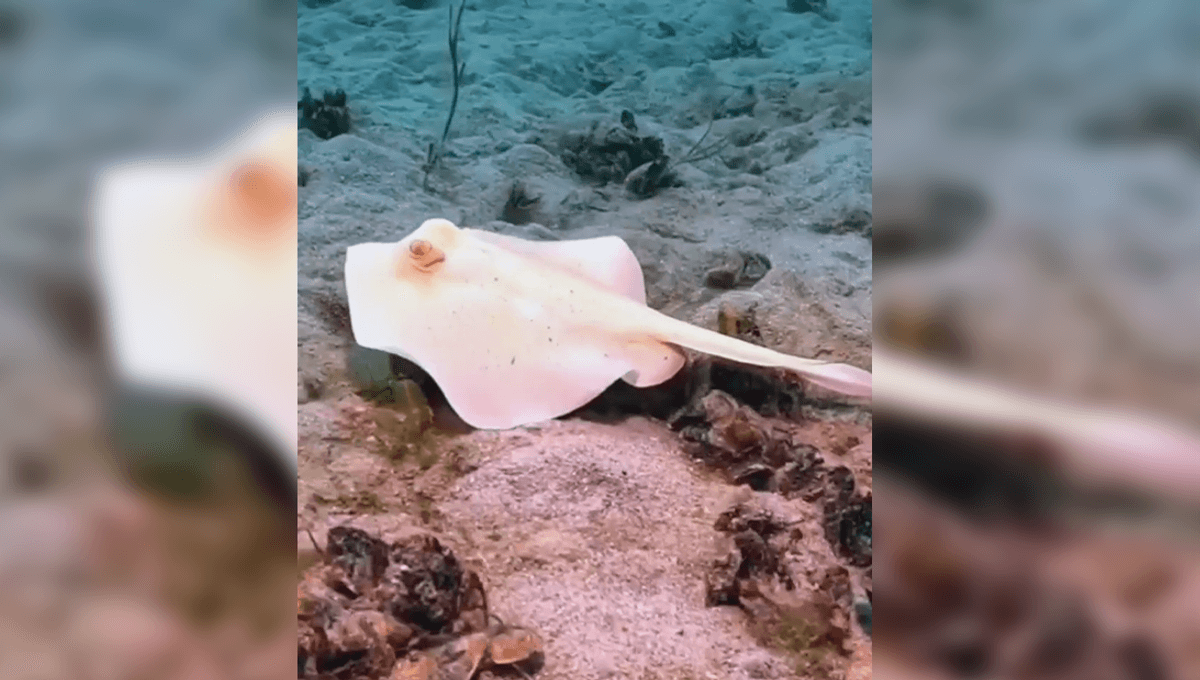
If you go down for a dive today, you could be in for a great surprise. Swimming off the coast of Australia, diver Jules Casey spotted a rare white stingaree swimming along the seafloor.
Stingarees belong to the family Urolophida, while the more common stingrays are found in the family Dasyatididae. Stingarees also have a slightly different-shaped caudal fin compared to stingrays, to help tell them apart.
There are thought to be at least six species of stingarees that live all along the New South Wales coast. However, the species are typically brown and gray, which makes telling them apart a little tricky. They are thought to feed on worms, crustaceans, bony fish, and even other stingarees.
Unfortunately the stingarees have a rather sad claim to fame. The Java stingaree is believed to be the first example of a marine fish that was declared extinct as a result of human activity. Only known from one specimen seen in 1862 in a fish market, it was believed to go extinct as a result of unregulated fishing practices, alongside habitat loss and degradation.
What makes Casey’s experience even more exciting is that she believes the stingaree to be exhibiting either albinism or leucism. In albinism, the body produces little or no melanin and can often present in species as white skin or fur and red eyes.
Leucism is the partial pigmentation loss in the skin surface or even feathers, but does not typically affect the eyes. There are many conditions that can change the typical coloring of an animal, including melanism, in which the animal appears totally black.
Source Link: Watch A Gorgeous White Stingaree Swimming Along The Seafloor